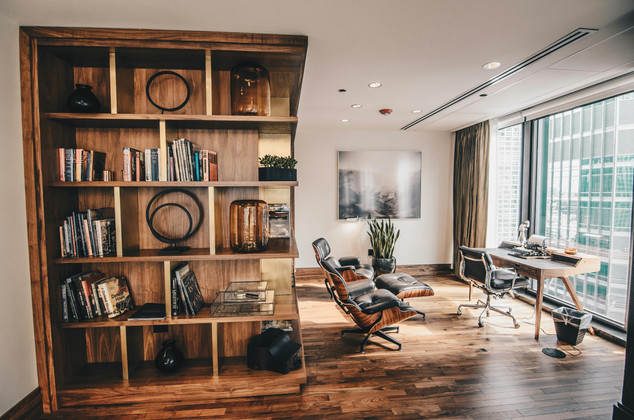Elevate Your Workspace: Incorporating Biophilic Design for a Healthier Office
Posted by The Urban Hyve Team on 1st May 2024
In the quest for healthier and more productive work environments, businesses are increasingly turning to biophilic design—a concept that seeks to integrate nature and natural elements into the built environment. Biophilic design acknowledges the innate human connection to nature and aims to create spaces that promote well-being, creativity, and productivity.
In this article, we will explore the principles of biophilic design and provide actionable tips for incorporating biophilic elements into your office space.
1. Bringing the Outdoors In
One of the fundamental principles of biophilic design is to bring elements of nature indoors. This can be achieved through the use of natural materials such as wood, stone, and bamboo in furniture, flooring, and decor. Incorporating living plants and greenery into the workspace adds visual interest. It also improves air quality and creates a sense of connection to the natural world.

Planter Box to Suit Life Tambour Door Units And Lateral Filing Cabinets
2. Maximising Natural Light
Natural light is a key component of biophilic design. It has been shown to have numerous benefits for employee health as well as well-being. Maximising natural light in the office space through large windows, skylights, and glass partitions helps reduce reliance on artificial lighting, enhances mood and energy levels, and also supports circadian rhythms. Position workstations near windows to ensure access to daylight as well as views of the outdoors.
3. Creating Biophilic Work Zones
Designate specific areas within the office as biophilic work zones where employees can connect with nature and recharge. These areas can include indoor gardens, green walls, or even rooftop terraces where employees can take breaks and also immerse themselves in natural surroundings. Providing access to outdoor spaces or creating indoor sanctuaries with natural elements promotes relaxation, stress reduction, and creativity.
4. Embracing Natural Patterns and Textures
Biophilic design often incorporates natural patterns and textures inspired by the environment, such as leaf motifs, organic shapes, and earthy tones. Introducing these elements through wallpaper, textiles, and artwork adds depth and texture to the workspace, evoking feelings of calmness and tranquillity. Consider incorporating biophilic patterns and textures into furniture upholstery, rugs, and wall coverings to create a cohesive and harmonious environment.
5. Designing for Views and Prospect
Access to views of nature, whether it's a lush green landscape, a serene water feature, or a bustling cityscape, has been shown to improve employee well-being and satisfaction. When designing your office space, consider the placement of workstations and seating areas to maximise views of the surrounding environment. Position desks near windows or create communal areas with panoramic views to offer employees visual connections to nature throughout the day.
6. Integrating Water Features
Water features such as fountains, ponds, or indoor waterfalls can have a calming and rejuvenating effect on the office environment. The sight and sound of flowing water evoke feelings of relaxation and tranquillity, reducing stress and promoting mental clarity. Incorporate water features into communal areas or reception areas. This creates focal points that enhance the overall atmosphere and also invite employees to pause and reflect.
7. Promoting Biophilic Engagement
Encourage employees to actively engage with biophilic elements in the workspace by providing opportunities for interaction and connection. Organise team-building activities such as gardening workshops, nature walks, or outdoor meetings to foster a sense of community and appreciation for the natural world. Additionally, invite employees to personalise their workstations with plants, natural decor, or personal items that evoke positive memories of nature.
In conclusion
Incorporating biophilic design principles into your office space can elevate the environment and promote employee health, well-being, and productivity. By bringing the outdoors in, maximising natural light, creating biophilic work zones, embracing natural patterns and textures, designing for views and prospect, integrating water features, and promoting biophilic engagement, you can create a healthier, more inspiring workspace that nurtures creativity, collaboration, and success. Embrace biophilic design and transform your workspace into a sanctuary where nature as well as productivity thrive in harmony.











